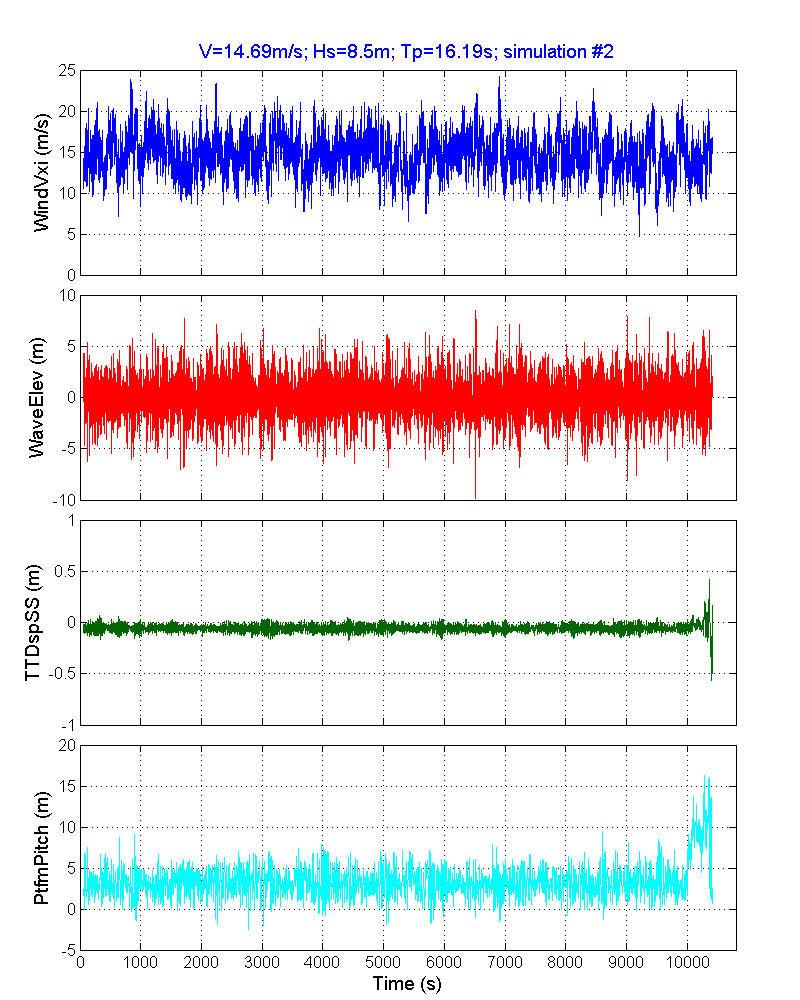Hi Jason,
I understand that starting in version v6.02c-jmj, you added an upper limit of 9999.999 seconds (2.77 hours) to the input parameter TMax in order to avoid an overflow problem in the output file. What is the overflow problem? If I wanted to do 3-hour long simulations with the 5MW Spar Buoy-Supported Floating Offshore Wind Turbine, how would I do that?
I tried and increased the limit on Tmax in FAST_IO.f90 to a bigger number, say 120000 (see below) and recompiled FAST.
IF ( ( TMax < 0.0 ) .OR. ( TMax > 12000.0 ) ) CALL ProgAbort ( ’ TMax must be between 0.0 and 12000.000 (inclusive).’ )
When I put in a Tmax that is greater than 9999.999s, FAST runs fine with a normal sea state (e.g. V = 6.30 m/s; Hs = 0.50 m; Tp = 8.77 s) but crashes with a more severe sea-state (e.g. V = 14.69 m/s; Hs = 8.50 m; Tp = 16.19 s) when the time passes 9999.999 seconds. Please refer to the error message below. The warning on the violation of small angle assumption does not appear until time passes 10000 seconds. Does this warning have anything to do with the 9999.999s time limit? Do you think if there is some kind of numerical instability before FAST crashes? As I mentioned above, in a less severe sea-states, FAST can finish 3hr-long simulations without problems, however in the output, the time column displays ******** for time > 9999.999 seconds.
Please give me some advice
Thank you for your support
Hieu
Error message
Timestep: 9975 of 10860 seconds. Estimated final completion at 14:42:43.
Timestep: 10000 of 10860 seconds. Estimated final completion at 14:40:59.
WARNING: Small angle assumption violated in SUBROUTINE SmllRotTrans() due to a large blade
deflection. The solution may be inaccurate. Simulation continuing, but future warnings will be
suppressed.
Timestep: 10025 of 10860 seconds. Estimated final completion at 14:40:10.
Error FF wind array boundaries violated: Grid too small in Y direction. Y=70.031; Y boundaries =
[-70, 70]
Error getting velocity in AeroDyn/AD_WindVelocityWithDisturbance().
Aborting FAST.
